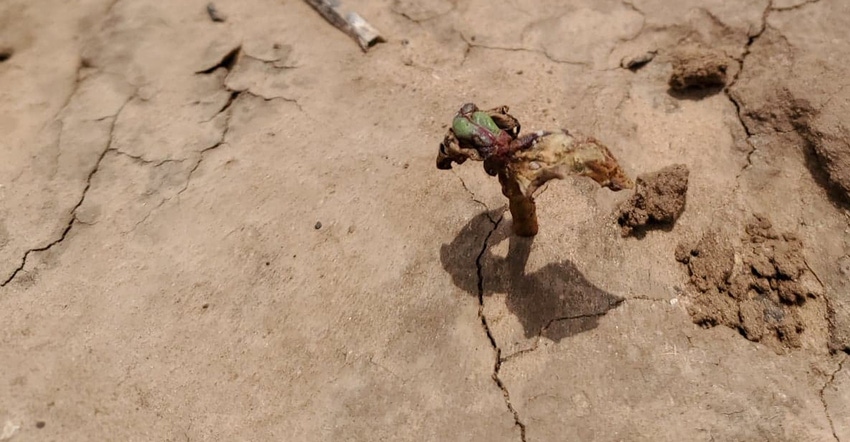
After several rounds of rainfall, combined with hail and gusting winds over the last four weeks, Dr. Murilo Maeda, Extension cotton specialist, TAMU Dept. of Soil & Crop Sciences, Lubbock, provides assessment tips when surveying damaged cotton, while Dr. Calvin Trostle, Extension agronomy, TAMU Dept. of Soil & Crop Sciences, Lubbock, talks about the 2019 "Alternative Crop Options after Failed Cotton and Late-Season Crop Planting for the Texas South Plains."
Trostle breaks down changes in the document since the 2017 & 2018 season:
Added comments on cotton variety selection, growth and regrowth after hail damage, and targeting late-season uniformity across the field (p. 3).
Updated on-line chemical label look-up information for http://www.cdms.net (p. 5).
See, Online guide published to aid Texas growers in replant decisions
Be careful about replanting grain sorghum and other crops behind cotton if dicamba has been applied (p. 6).
An update on sugarcane aphid (SCA) in Texas and possible implications for grain sorghum in the South Plains (thresholds for spraying were lowered mid-season in 2015, and lowered further for 2016; also, SCA did overwinter in scattered locations in the South Plains) as well as links to grain sorghum hybrids that express tolerance of the aphid (p. 8).
Propazine (Milo-Pro) is no longer available. This removes a common herbicide for grain sorghum in rotation with cotton.
Reporting of recent research that suggests hybrid pearl millet is (only) a poor-host of sugarcane aphid and is thus a possible alternative forage option to sorghum family forages (more likely downstate) (p. 26).
Proso millet for grain is now included as a potential short-season alternative crop for late planting (p. 27).
Comments are added about replant and late-plant options for organic cropping. (p. 30)
See, Cotton replant provisions dictate producer options
Watch one of the two LIVE shots with Maeda and Trostle. (If you want an interview interrupted by the very element that damaged crops this last weekend, watch the first LIVE video. If you want a video out of the wind, watch the second video. Keeping it real here at Farm Press!)
About the Author(s)
You May Also Like






